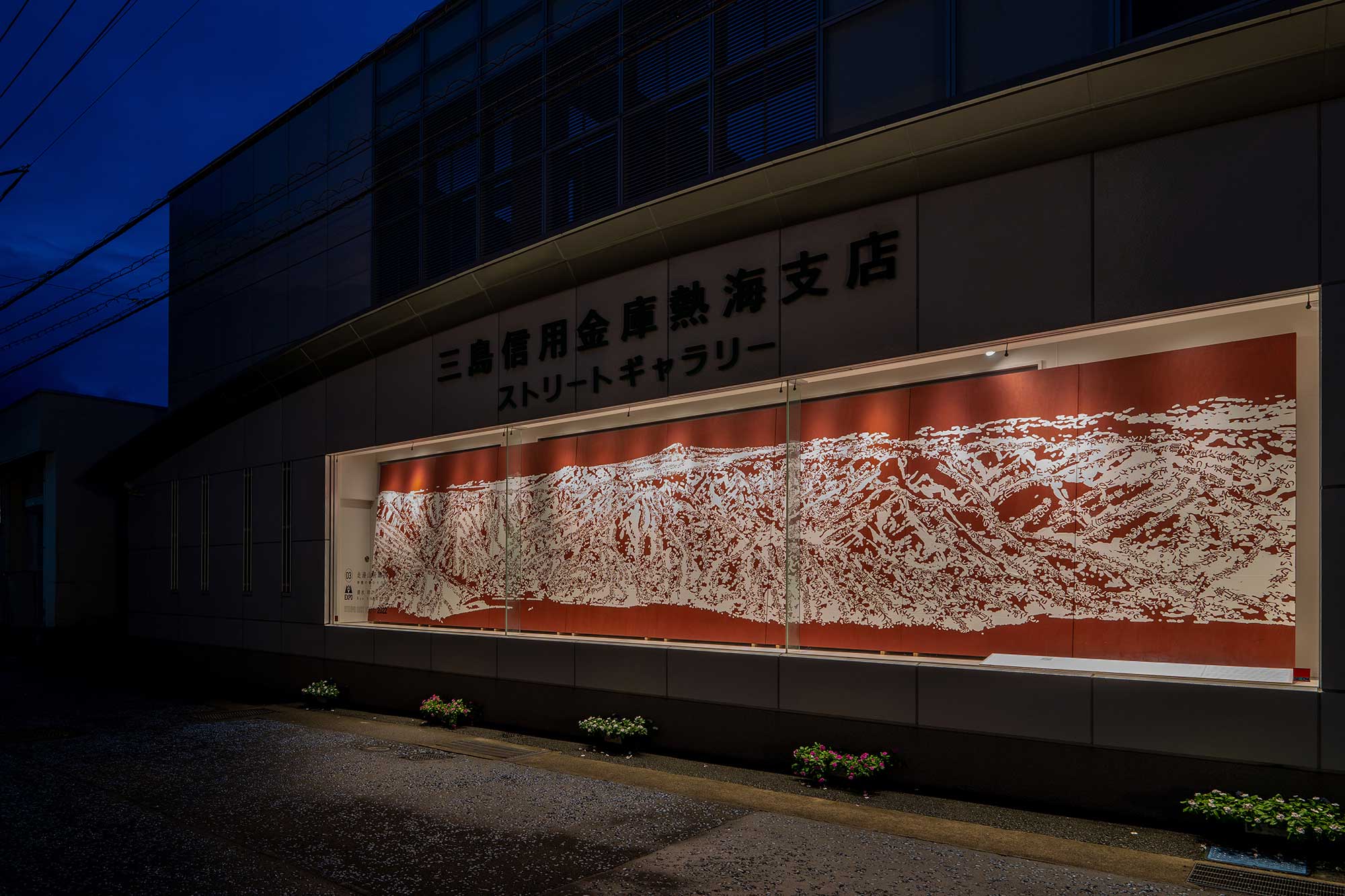
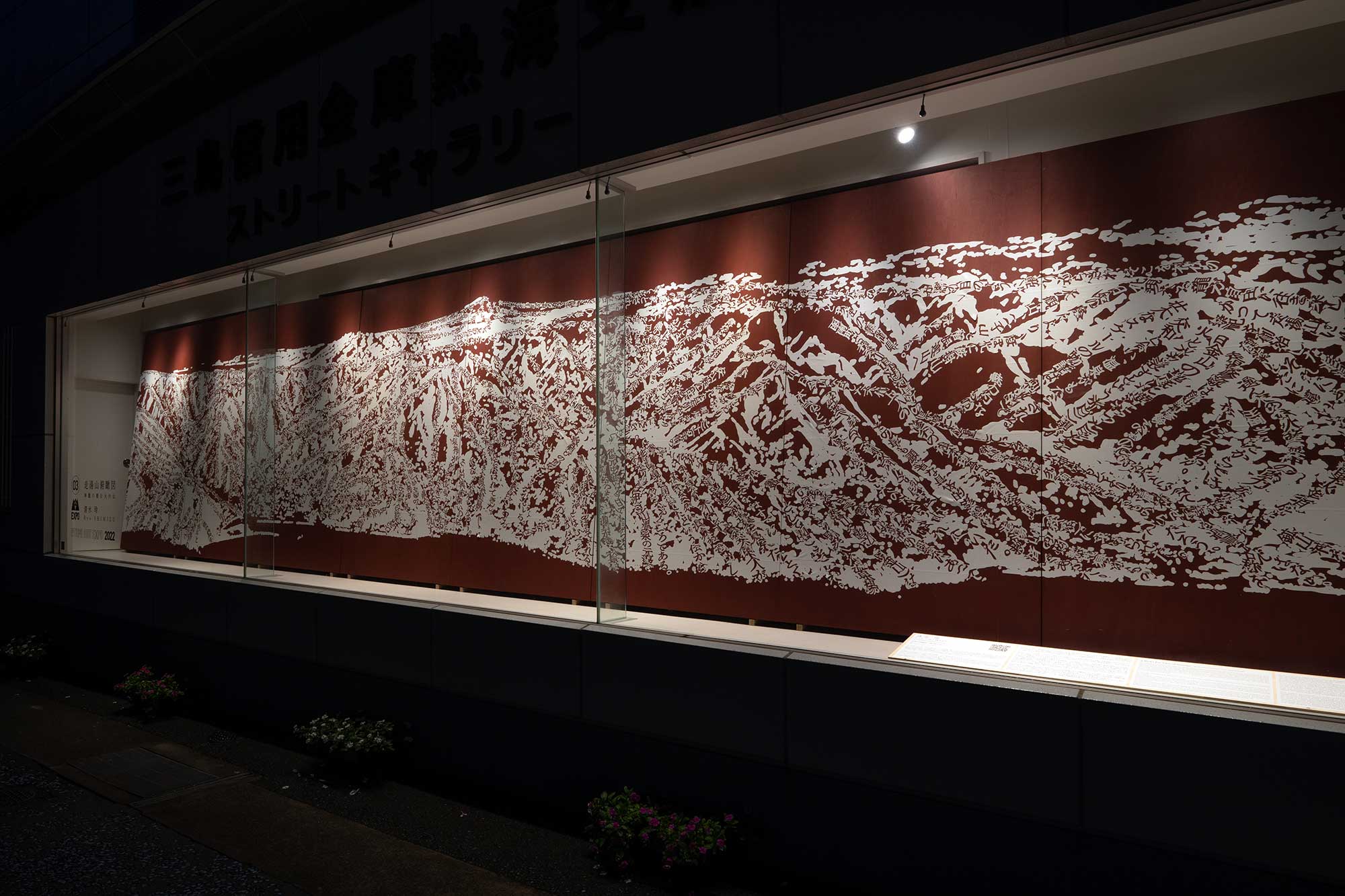
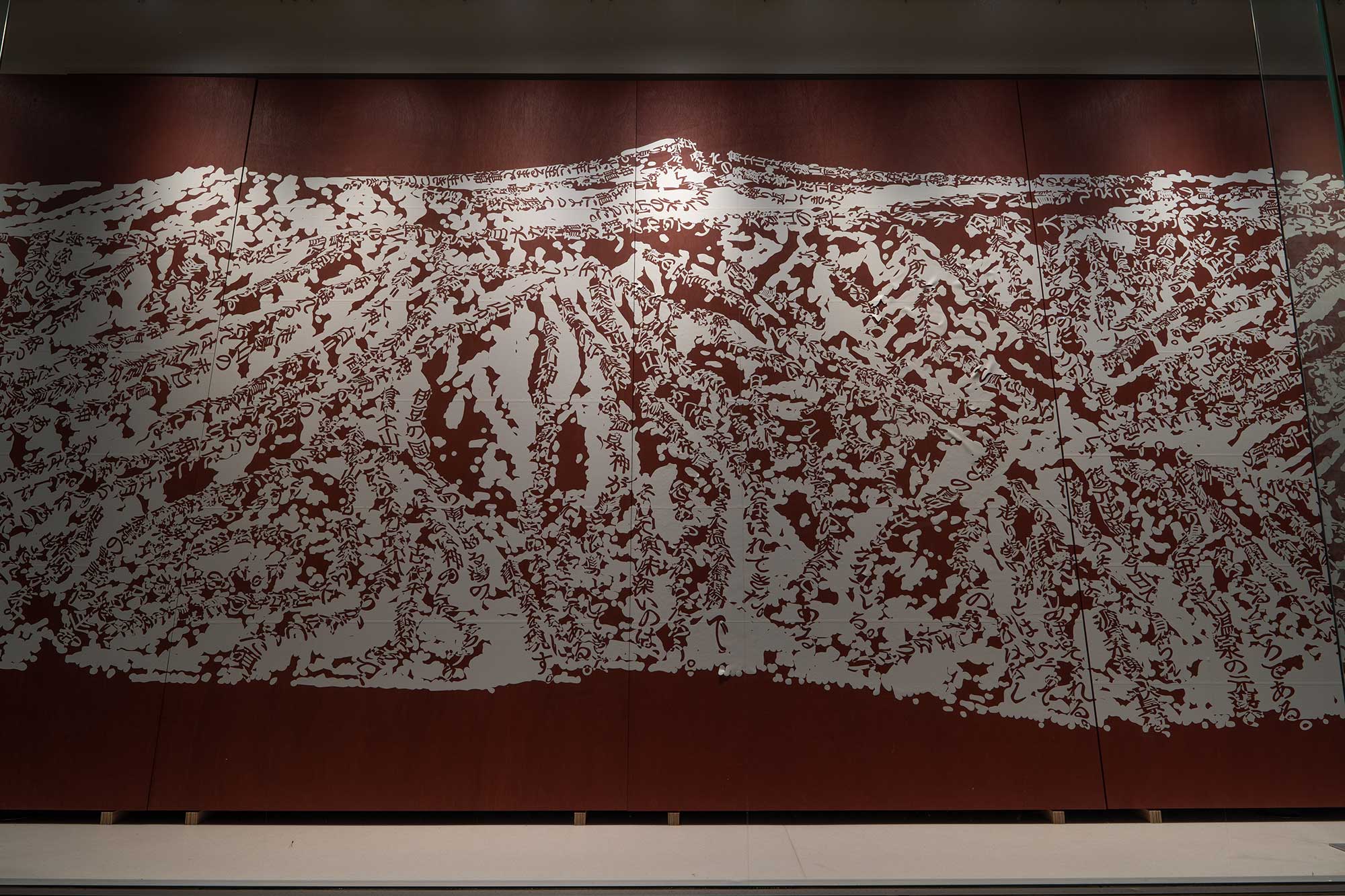
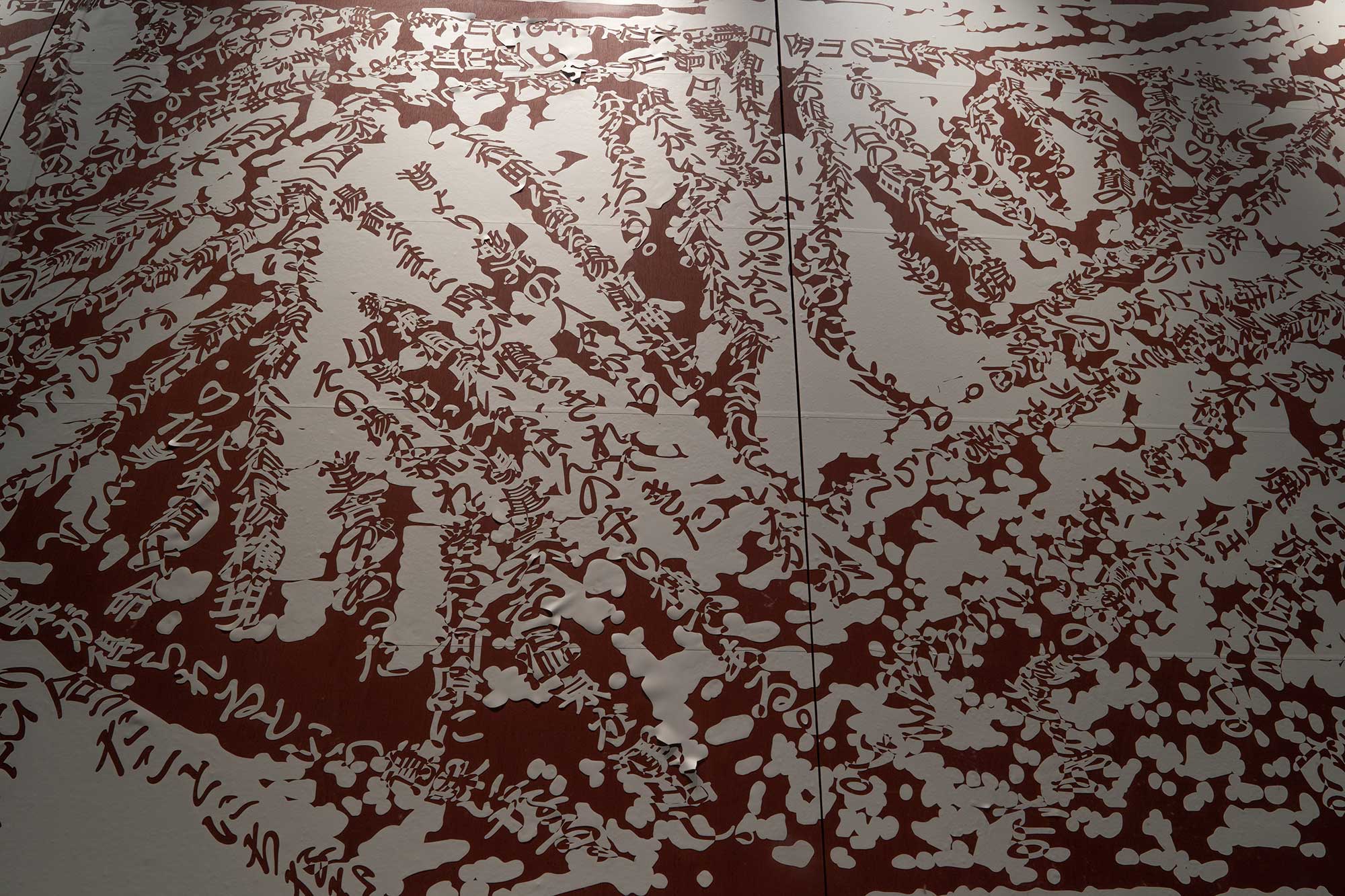
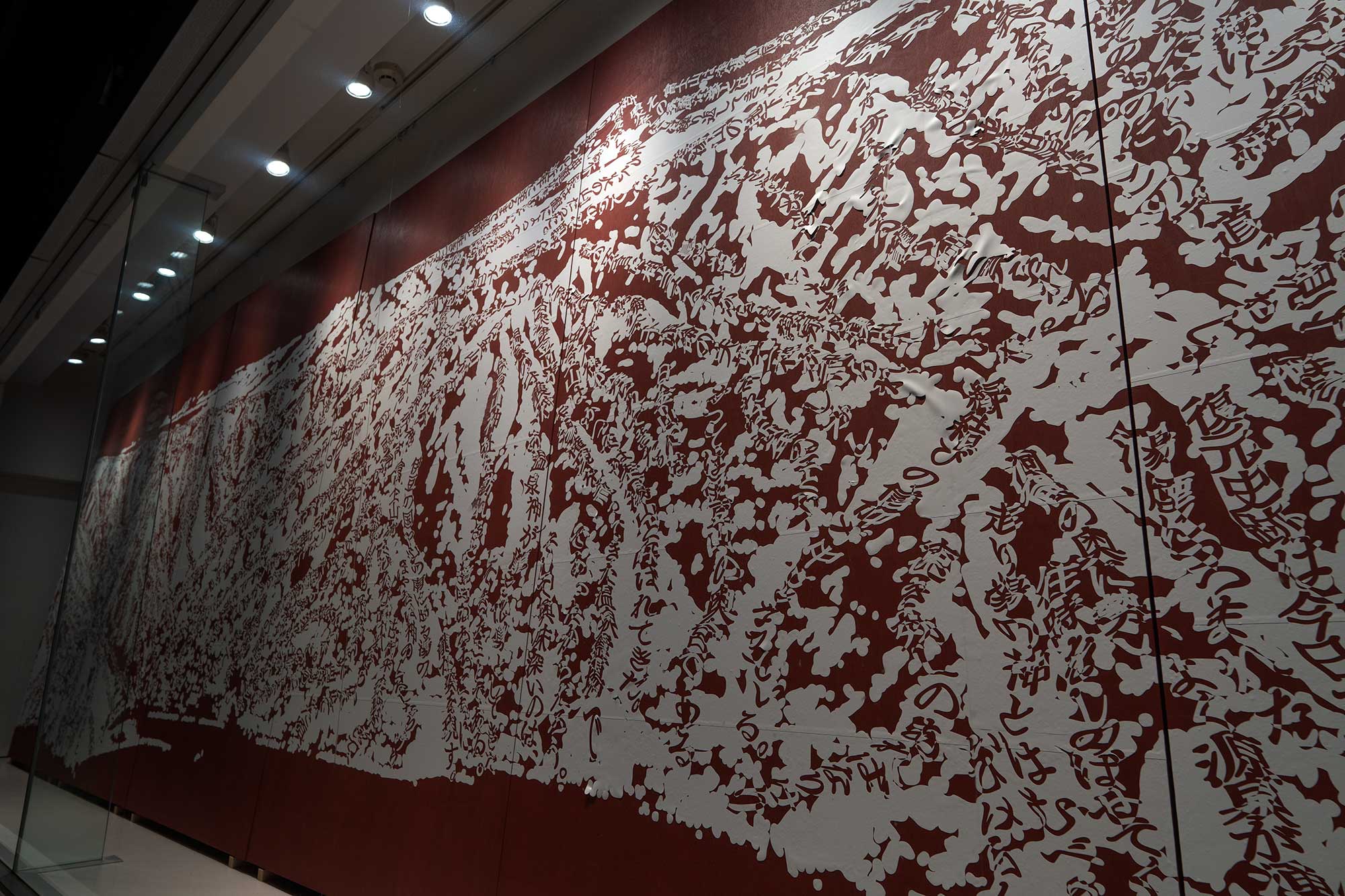
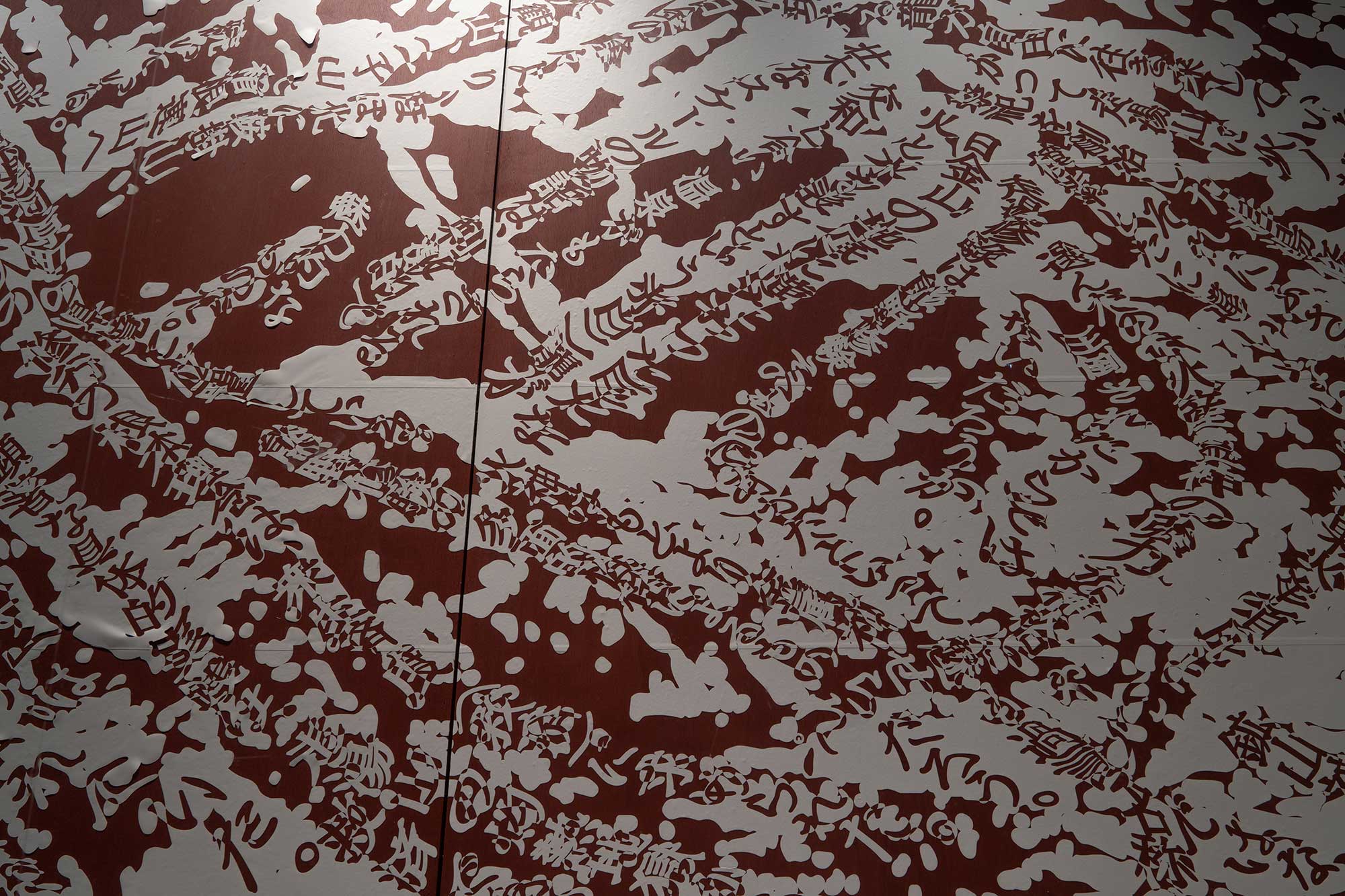
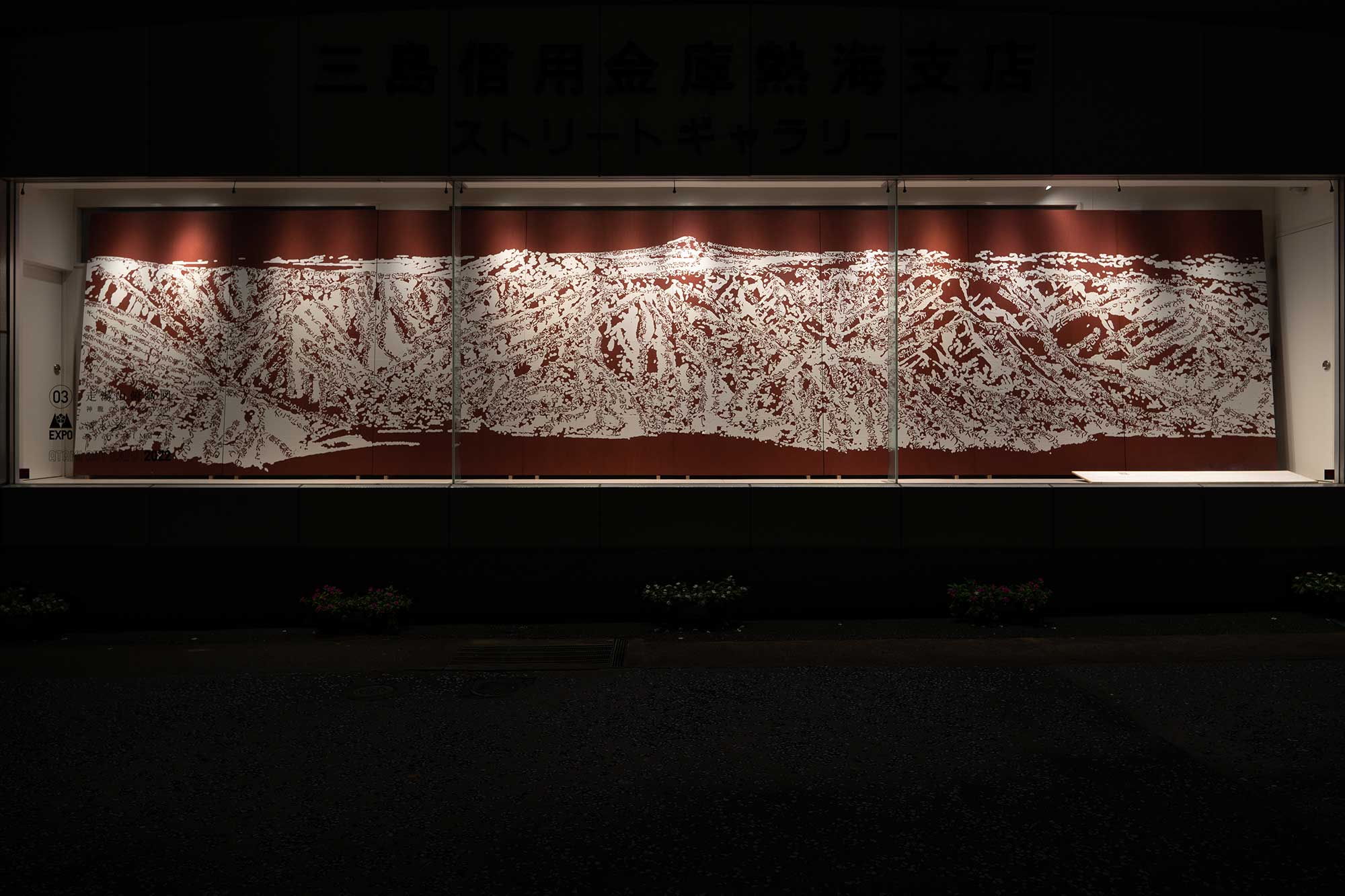
A Bird's Eye View of Sotozan -The Mountain of Fire Where Divine Dragons Dwel-
走湯山俯瞰図 -神龍の棲む火の山-
PVC sticker sheets, oil stain on wooden panel
9,840 × 2,200mm
2022
木製パネルにオイルステイン、カッティングシート
9,840 × 2,200mm
2022年
Ryo Shimizu creates works mainly using textual characters. He has great interest in the form of textual characters and the magical elements of how textual characters blend into everyday life and how they affect us unconsciously. Since 2020, the year of the COVID-19 pandemic, Shimizu has been continuously observing, researching, and photographing the formation of the topography, flora, and fauna of the Izu Peninsula (Shizuoka Prefecture, Japan) and other areas. He works on projects and artworks with the theme of humans before the advent of text characters or the good and bad things brought about by the invention of text characters.
In Atsushi Nakajima's "Mojika," there is a passage expressing the mischief of the spirit of textual characters.
For example, calling a nameless flower or plant a "weed" will immediately cause people to see it as something to be exterminated. One could say that textual characters have the power to manipulate people and bring misfortune. However, taking a closer look at the plants and flowers growing in the mountains, one can see that they all have their own relationships, characteristics, and role in maintaining the ecosystem.
Shimizu hypothesizes that the act of "looking" at a landscape releases the captivity of the mischief of the spirit of textual characters, based on his daily hiking experience in the mountains of Izu, Hakone, and Yugawara. He seeks to explore the primal meaning and possibilities of seeing and reading the landscape (or perhaps textual characters) by drawing bird's eye views of the terrain he actually walks on.
Izusan was once called Sotozan. Due to its volcanic activity, its hot springs brought a fiery hell opposite to the blessings one would expect. As the name "Atami (Hot Sea)" implies, many suffered from the hot springs that gushed out around Sotozan.
Sotozan is said to have been a hot spring sacred site, where Hashiryu Gongen (Izu Gongen), a hot springs guardian deity who incarnates as a dragon, was worshipped. People prayed there for relief from the fiery hell caused by the scalding hot springs. Sotozan Engi, a basic historical document of Sotozan established in the late Heian to early Kamakura period, states that two dragons, one red and one white, mingle and slumber peacefully in harmony underground. The red dragon here refers to the high-temperature hot spring (fire god), while the white one means the water (water god). The phrase, "two dragons, one red and one white, mingle and slumber peacefully in harmony underground," means that the high-temperature hot springs and water mingle to obtain a hot spring with just the right hotness. Many believe the white dragon and red dragon of Sotozan (Higaneyama) may have been fire and water gods.
This work is the newest in a series of bird's eye view maps with textual characters arranged along the topography. Shimizu began working on this series after 2020, depicting the mountains and streets of Atami centered on Sotozan (Higaneyama/Izusan). Along the topography, Shimizu arranged texts on the fire deity at Izusan and Higaneyama, taken from Sotozan Engi and Shigeo Okakura's Shinryu no Sumu Hi-no-Yama (The Mountain of Fire Where Divine Dragons Dwell).
This work delivers Shimizu's wish for the earliest possible recovery and resolution from the mudslide disaster at Izusan in Atami City in 2021, along with the creation and transmission of the tale of the red and white dragons of Sotozan and the artist's attempt to find the background and meaning of this story.
文字の成り立ちや、日常に溶け込み人の無意識に働きかける文字の持つ呪術的要素に関心を持ち、主に文字を用いた作品を制作している清水玲。コロナ禍となった2020年以降、伊豆半島を中心とした地形の成り立ちや動植物の観察や調査、撮影を継続的に行なっており、文字を持つ以前の人間、あるいは文字の発明がもたらした功罪を主題としたプロジェクトや作品制作に取り組んでいます。
中島敦の『文字禍』に、「文字の精の悪戯」という表現がでてきます。
例えば名もなき草花に「雑草」と名付けられると、人々はたちまちその草花を駆除すべき存在としてしか見えなくなってしまうように、文字には人間を操り、禍(わざわい)をもたらす力があるのではないでしょうか。しかし山に入ってそこで生息する草花をよく観察してみると、それらそれぞれに特性があり、生態系を維持する役割や関係性を担っていることに気付かされます。
清水は、日頃から継続的に行っている伊豆・箱根・湯河原を中心とした山歩きの経験から、「風景を『見る』という行為は『文字の精の悪戯』による囚われを解き放つ」という仮説をたて、実際に歩いた地形を俯瞰図として描くことで、風景(あるいは文字)を見ること・読むことの原初的な意味とその可能性を探ろうとしています。
伊豆山はかつては走湯山と呼ばれ、活発な火山活動により、温泉の恵みとは対極に炎熱地獄がもたらされていました。「熱海」の地名からも知られるように、走湯山周辺にはかなりの高温の熱泉が湧出し、それに苦しめられる人々が数多くいたことがうかがえます。
走湯山は、龍を化身とする温泉の守護神「走湯権現」(伊豆権現)を祀り、炎熱地獄(高温の熱泉による苦悩)からの救済を祈願する温泉霊場であったと言われています。走湯山の基本史料とされる『走湯山縁起』(平安末期~鎌倉初期成立)には「此地下赤白二龍交和して臥す(地下に赤白二匹の龍が和合し静かに休眠している)」と記されており、「赤白二龍」のうち「赤」は高温の熱泉(火神)を、「白」は水(水神)を指し、「赤白二龍交和して臥す」とは、高温の熱泉と水が交わり、ほどよい湯加減の「温泉」が得られるという意味になり、走湯山(日金山)の神龍(赤白二龍)は火神であり、水神であったのではないかと考えられています。
本作は2020年以降取り組み始めた地形に沿って文字が配置された俯瞰図シリーズの新作で、走湯山(日金山・伊豆山)を中心とした熱海の山並、街並が描かれており、地形に沿って『走湯山縁起』、岡倉捷郎『神龍の棲む火の山』から引用した伊豆山、日金山における火ノ神伝承を巡るテキストが配置されています。
ショーウィンドウの室内には空調が施されているもののほとんど効いておらず、日中は高温となり、夜間は冷え込み、一日を通しての寒暖差が激しく、それにともないカッティングシートは浮き上がり、時に剥がれ落ちてきます。
走湯山の赤白二龍にまつわる物語の創出と伝承、その背景と意味を探ろうとする作家の痕跡とともに、2021年に発生した熱海市伊豆山土石流災害の一日も早い復興と問題解決を願う想いが込められています。